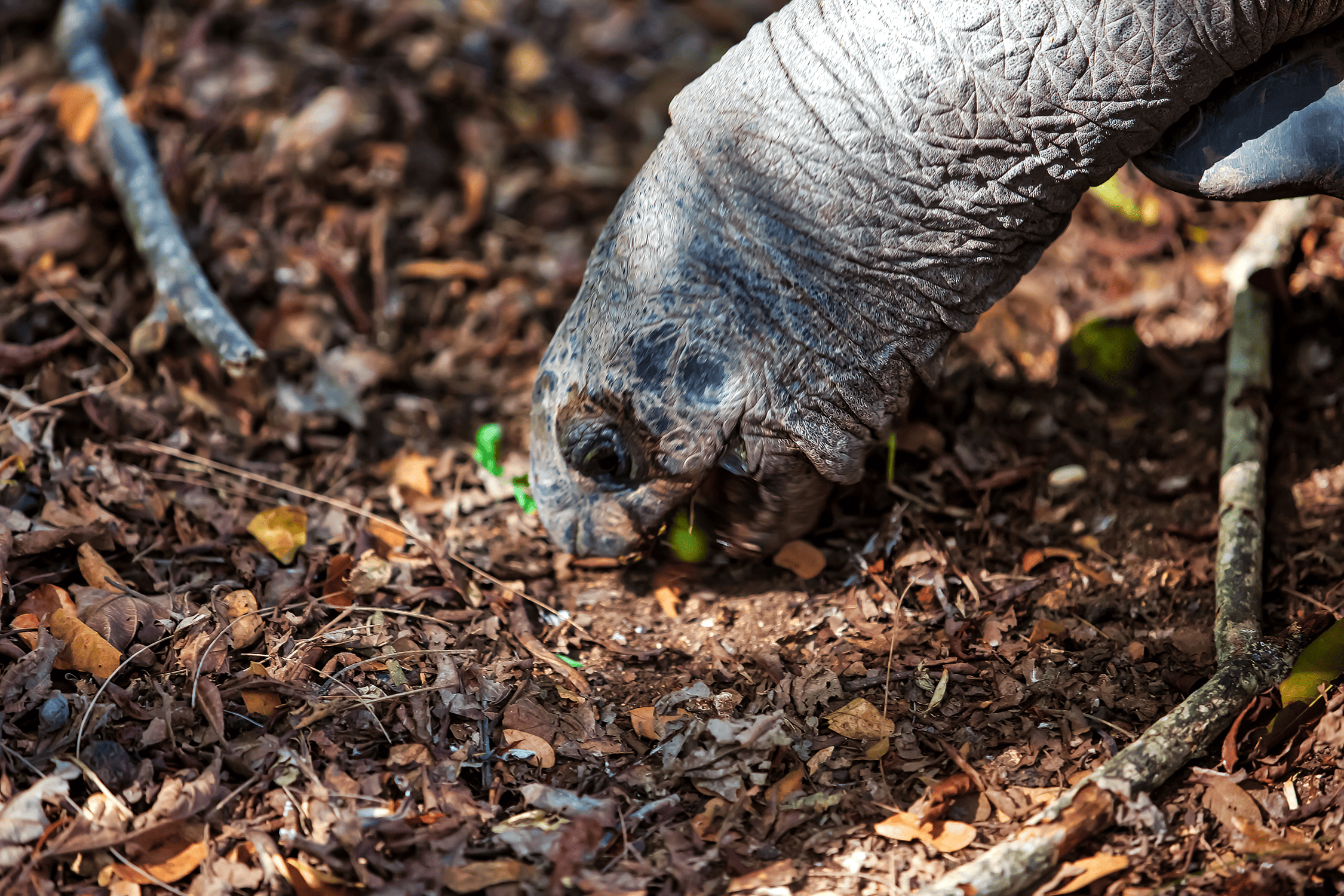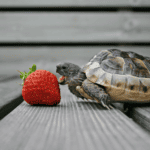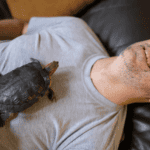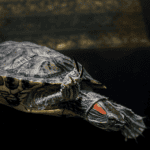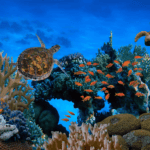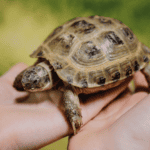As the warmer weather approaches, many of us are excited to spend more time outdoors and maybe even spot some wild turtles basking in the sun. While it may be tempting to feed these adorable creatures, it’s important to know what to feed them in order to keep them healthy.
What do Wild Turtles Eat?
Turtles are opportunistic eaters, which means they will eat a variety of different foods depending on what is available. In the wild, different turtle species have different dietary needs. For example, box turtles are mostly herbivorous, while painted turtles and red-eared sliders are mostly carnivorous. Some common foods that wild turtles might eat include:
- Leafy greens: Wild turtles will eat a variety of leafy greens such as lettuce, collard greens, and dandelion greens.
- Fruits: Wild turtles will also eat fruits such as strawberries, blueberries, and melon.
- Insects: Wild turtles will eat insects such as crickets, worms, and grasshoppers.
- Fish: Wild turtles will also eat small fish and minnows.
- NOTE about Carnivorous turtles: The carnivorous turtles will eat small invertebrates, worms, insects, crustaceans, and mollusks.
It’s important to note that not all wild turtles will eat the same types of food. For example, a box turtle will have a very different diet than a red-eared slider. It’s also important to note that wild turtles may not always be interested in the food you offer them.
What Not to Feed Wild Turtles
While wild turtles may eat a variety of foods, there are some foods that should be avoided. These include:
- Protein-rich food: Feeding wild turtles too much protein-rich food can lead to health problems such as metabolic bone disease.
- Starchy foods: Foods such as bread, crackers, and cereal should be avoided as they can lead to obesity and other health problems.
- Junk food: Foods such as chips, candy, and other junk foods should be avoided as they can lead to health problems such as obesity and metabolic bone disease.
- Farmed fish: Wild turtles should not be fed farm-raised fish as they may contain toxins and pollutants.
- Food from pet store: Foods specifically made for pet turtles may contain too much protein, which can harm wild turtles.
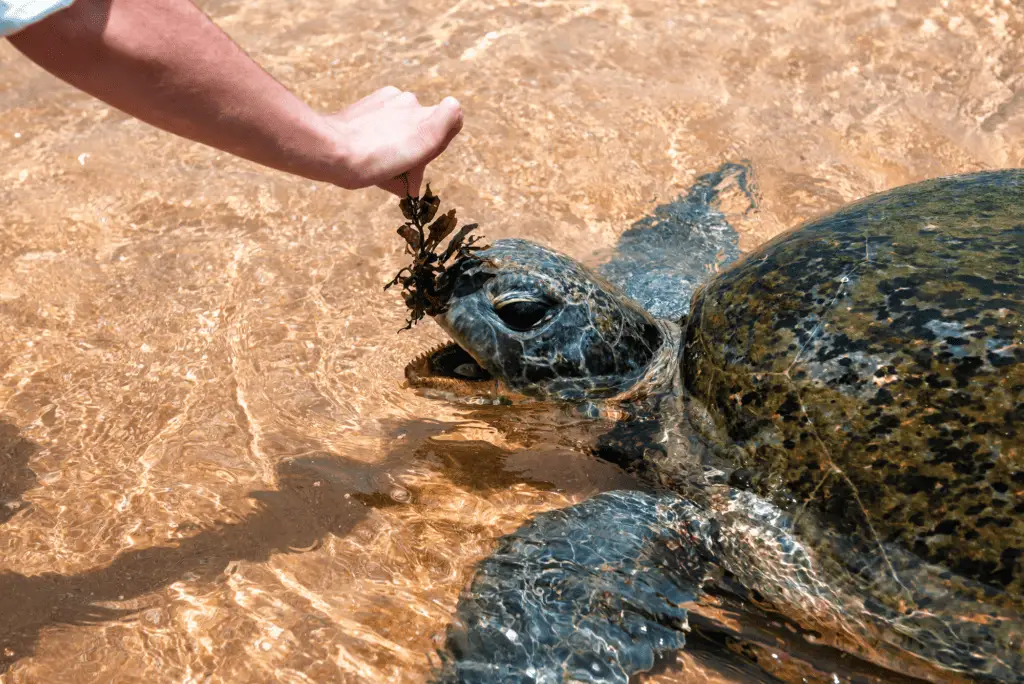
How to Feed Wild Turtles
When feeding wild turtles, it’s important to remember that these creatures have evolved to find food on their own. Rather than feeding them, you should focus on providing a natural habitat for them to find food. This can be done by:
- Creating a pond: If you have the space, create a pond in your backyard. This will provide wild turtles with a place to find food and to bask in the sun.
- Planting native plants: Plant native plants in your backyard that wild turtles might eat. This will provide them with a natural source of food.
- Avoiding pesticides: Avoid using pesticides in your backyard as they can harm wild turtles and the insects they eat.
- Keeping a safe distance: Remember that wild turtles are wild animals, and it’s important to keep a safe distance from them. Do not try to touch or handle them.
- Differentiating between Wild and Pet Turtles When it comes to feeding wild turtles, it’s important to remember that they have different needs than pet turtles. Pet turtles are often kept in captivity and may have different dietary needs or have been domesticated to eat certain types of food. Wild turtles, on the other hand, have evolved to eat a specific diet in the wild and have different habitat requirements. Feeding wild turtles the wrong types of food or keeping them in an artificial habitat can have serious consequences for their health. Just like trying to tame a wild animal, trying to domesticate a wild turtle is not a good idea, it would be like trying to plant a cactus in the arctic tundra, it simply won’t survive.
- The Impact of Human Activity on Wild Turtle Populations Human activity, such as pollution and habitat destruction, has a major impact on wild turtle populations. Polluted waterways can make it difficult for turtles to find food and can also harm their health. Habitat destruction, such as the destruction of wetlands or the building of dams, can also greatly reduce the number of wild turtles in an area. As responsible stewards of the earth, it is up to us to do our part in protecting wild turtle populations. This means being mindful of our impact on the environment and supporting conservation efforts.
- Common Health Issues in Wild Turtles Just like any living creature, wild turtles can fall ill if their environment or diet is not suitable. One of the most common health issues in wild turtles is metabolic bone disease, which occurs when turtles don’t get enough calcium in their diet. This can lead to deformed shells and other health problems. Another common issue is turtle viral infections, which can be caused by exposure to contaminated water or stress. As turtle lovers, it is our responsibility to be aware of these issues and to do our best to prevent them.
- Tips for Observing Wild Turtles Observing wild turtles can be a fascinating and rewarding experience, but it’s important to do so responsibly. Turtles are easily stressed and disturbed, so it’s important to approach them slowly and quietly. Never chase or corner a turtle, and try to keep a safe distance. It’s also important to be mindful of the turtle’s habitat and to leave it undisturbed. By following these guidelines, we can enjoy the beauty and wonder of wild turtles without causing them harm.
- Seasonal Feeding Habits Just like humans, wild turtles have different dietary needs depending on the time of year. During the mating season, for example, male turtles need extra protein to build up their strength. Female turtles may also eat more during this time to provide nourishment for egg-laying. During hibernation, turtles slow down their metabolism and may not eat at all. Understanding these seasonal feeding habits can help us provide the best possible care for wild turtles in our area. As we learn more about the natural cycles and behaviors of these creatures, we can better understand and protect them.
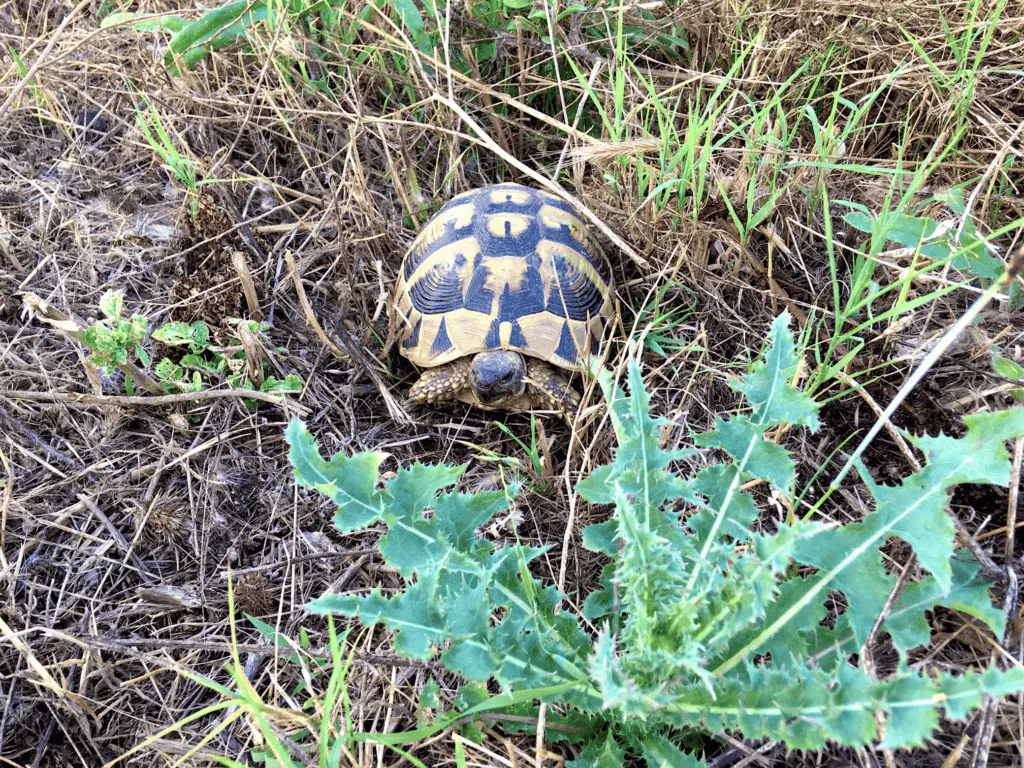
Conclusion
Feeding wild turtles can be a fun and rewarding experience, but it’s important to do so with care and consideration for their health and well-being. By understanding what wild turtles eat, what to avoid feeding them, and how to provide a natural habitat, you can ensure that the wild turtles in your area thrive. Always remember, wild turtles are wild animals, and it is never a good idea to try to domesticate them or take them as pets. By providing them with the right food and habitat, we can help support and preserve wild turtle populations for future generations to enjoy.
